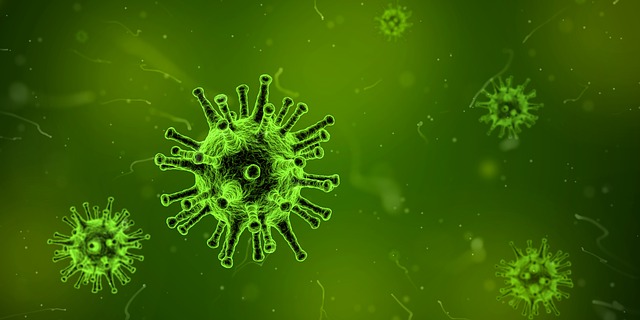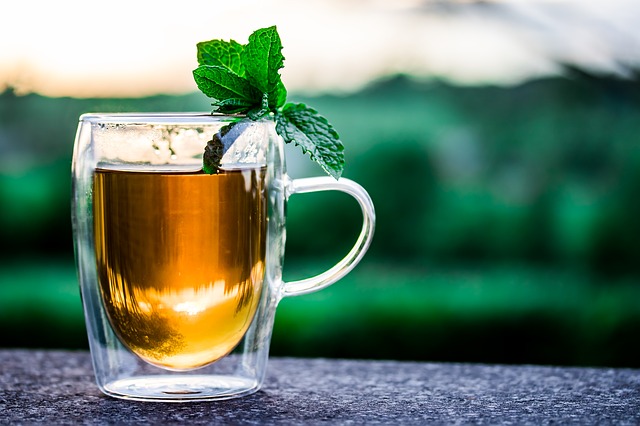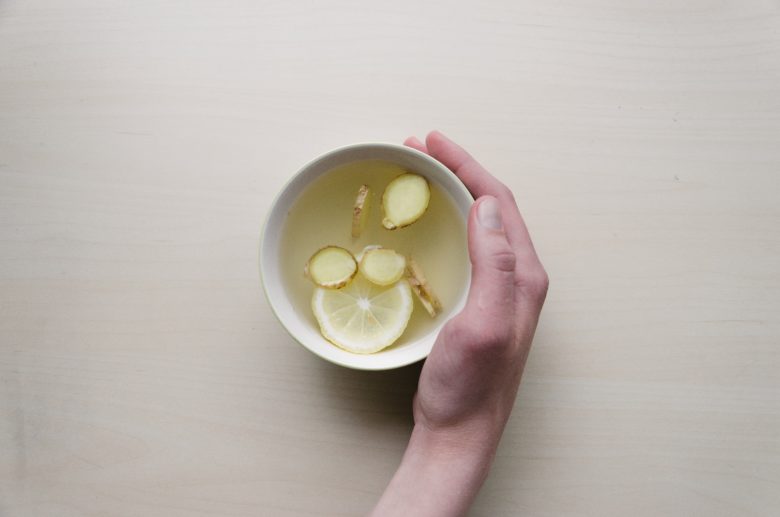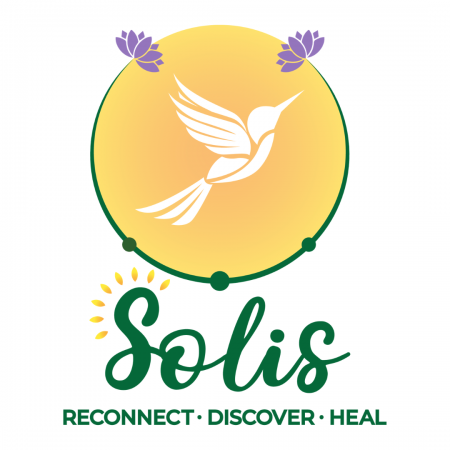Here in Canada, winter is coming! And that means one thing for sure, colds and flus will soon be abounding. Yuck. While this is definitely an inconvenience for anybody, for those who are majorly concerned about the state of their immune system (such as those recovering from conventional cancer treatments) this can be a particularly concerning time. And for anyone wanting to prevent a recurrence, keeping our immune systems strong and functioning optimally is a priority. Cold and flu bugs are a distraction to an immune system, taking its efforts away from more important issues in your body, like cancer cells. So, shortening the duration of any bug is important to our health and healing; plus, who wants to be sick for weeks??
Last week, I detailed the first half of my family’s cold quadfecta, vitamin C and oregano. Today, I will be going into the second half, vitamin D and xylitol, as well as a bonus feel-good tea that is a fav of my partner’s and mine. And again, please keep in mind, I am not a doctor and am just sharing what I do. Always get the input of your healthcare team before adding anything new to your protocol. Let’s get to it!

Vitamin D
The sunshine vitamin! I absolutely love vitamin D, and our bodies do too. I was aware of its benefits for mood, low levels contributing to seasonal affective disorder, but it was a surprise to find out that it helps bolster our immune systems and fights cold and flu bugs.
Vitamin D performs a number of day-to day roles in our bodies. These include helping in the maintenance of strong bones, teeth, and muscles, and facilitating the sending of nerve signals from the brain to every body part [1]. But they also support our immune systems. Immune cells have vitamin D receptors and they are capable of synthesizing the active vitamin D metabolite [2]. As such, vitamin D is capable of acting as a cell signaler, contributing to the activation and performance of these immune cells and helping to modulate immune responses [2]. In this way, vitamin D helps our bodies to fight off viruses and invading microbes.

Not only does vitamin D perform all of these important functions, but there is also mounting research to show that D also fights cancer. Many studies have been done with varying results, but many are promising. For example, in a study with melanoma patients, a greater proportion had insufficient vitamin D levels in comparison to the healthy controls [3]. In a further study with thyroid cancer patients, vitamin D levels were lower in patients compared to controls [3], and in a breast cancer study, women with breast cancer that were deficient in vitamin D had larger tumors, more advanced stages and reduced survival than those that were not deficient [3]. Although more research is needed, a growing body of evidence suggests that vitamin D “[…] enhances the self-destruction of mutated cells (which can replicate and cause cancer), slow down the production and spread of cancer cells, helps in the differentiation of cells (cancer cells are not differentiated), [and] prevents the formation of new blood vessels from pre-existing ones (this can help stop the progress of benign tumors into cancerous ones)” [4].
Studies have varying results however, and this variation is due to many possible factors. Study design is most likely, as some studies use low levels of D (in the hundreds of ius) and some use very large levels (in the tens of thousands) [3]. Base levels of D in participants could also be responsible for the variations in results. Other factors such as only using one gender or the other, participants being post or premenopausal, and body mass index can all affect how much vitamin D levels were increased in these studies [3]. Studies that take these factors into account and temper them are needed for more consistent results.
There is something to keep in mind when it comes to vitamin D. You shouldn’t take any vitamin D supplement without taking vitamin K2, as vitamin K2 deficiency is connected to vitamin D toxicity symptoms, which includes excessive calcification that can contribute to the hardening of your arteries [4]. When it comes to cancer, you want to make sure your D levels are on the high end of the normal range (and really, as long as you are taking vitamin K2, you really can’t overdo it on the vitamin D). When I feel myself getting sick, I usually up that to 15,000iu a day for a few days. I started taking 5000iu a day, and then adjusted after getting my vitamin D levels tested. This is also something you should consider doing. I get mine tested every two months, and if they have dipped, I up my 5000iu to 8000iu until retest.

Xylitol
This is one that some people may be familiar with as a sweetener, but most of you are probably saying, what the heck does xylitol have to do with colds and flus? A very good question, and one I myself had when my mom first suggested this to me years ago.
For those who don’t know what xylitol is, it is a natural sugar alcohol found in many plants, but for sweeteners and medicine it is typically derived from the bark of birch trees [5]. But what does a sweetener have to do with colds, you might be asking? Essentially, xylitol coats your throat and nasal passages and creates an environment where microbes can’t flourish. In one study, xylitol significantly reduced the growth of a number of streptococci bacteria, including S. pneumoniae, the bacteria responsible for pneumonia infections [6]. So neat!
I use xylitol today according to my mom’s recipe: I mix 1 tsp of xylitol with ¼ cup of water and a pinch of salt (the salt makes it easier on the slightly salty nose). For a sore throat, I gargle a bit of this solution for 30 seconds and then swallow it. For a stuffy nose, it is a little less pleasant and not for everyone, but I promise it helps! Place the rim of the cup containing the xylitol solution under your nose, tip it up slowly until the liquid is just under your nostrils, and then gently breath in a small amount of the solution. Immediately tip your head back and plug your nose, allowing the solution to trickle through your nasal passages and down the back of your throat. After a few seconds, once you have felt the solution hit your throat, you can lower your head and release your nose, sniffing in a few times to clear any remaining solution from your passages. It takes a few times to get used to it, but you will!
You can order xylitol on amazon or find it in most grocery stores in the health food section.

Bonus! Cold and Flu Busting Tea Recipe
This tea is my go-to when I’m not feeling well. Jesse loves this too, and he has mastered the honey-to-lemon ratio. It is so comforting, and the ingredients will actually help your body fight off those buggies too!
Ginger has been proven in studies to successfully combat nausea, to have antifungal effects and the ability to combat bacterial infections, to also ease inflammation, and (most important for us) to have anti-cancer properties [7]. More research is needed, but in test tubes, ginger has shown that it may be effective at blocking cancer cell growth and development, particularly in in ovarian, pancreatic, gastrointestinal, and prostate cancer [8].
Citrus fruits have been shown to improve the condition of skin, boost immunity with their vitamin C content, and to have anti-inflammatory and anti-bacterial properties, and once again studies have also shown their anti-cancer effects such as reduced cell proliferation and inducing apoptosis (programmed cell death) [9, 10].
Besides being delicious, peppermint contains a chemical called menthol which can aid in relieving congestion and help to release phlegm when coughing. The oil in peppermint leaves may also have antiviral benefits, helping to prevent the spread of viruses that cause colds and flu [11].
Finally, delicious and helpful honey! It’s not just for sweetening drinks and desserts. Honey has been proven to have antimicrobial effects by preventing the growth of bad bacteria and fungi, it is rich in antioxidants (if it is of high-quality), and boosts energy [12]. When it comes to cancer, honey has been shown to boost immunity, scavenge toxic free radicals, and the flavonoids it contains have been shown to induce apoptosis, disrupt the mitochondrial membranes of cancer cells, and inhibit cell proliferation [13].

To make this delightful tea you will need:
1 peppermint tea bag or a teaspoon of loose leaf peppermint tea and a tea ball
1 lemon or lime wedge
1-2 slices of fresh ginger root, about 1/8-1/4 inch thick (depending on how strong you like it)
1 teaspoon of honey
And making it is very simple. Put the peppermint and ginger into a mug and squeeze the lemon or lime over them before dropping the wedge in as well. Pour boiling water over the ingredients, dissolve the honey into the tea, and enjoy!
Happy Healing ❤️
References
- Vitamin D: Fact Sheet for Consumers – https://ods.od.nih.gov/factsheets/VitaminD-Consumer/
- Vitamin D and the Immune System – https://www.ncbi.nlm.nih.gov/pmc/articles/PMC3166406/
- Influence of vitamin D on cancer risk and treatment: Why the variability? – https://www.ncbi.nlm.nih.gov/pmc/articles/PMC3166406/
- Vitamin D Resource Page: The Role of Vitamin D in Disease Prevention – https://www.mercola.com/article/vitamin-d-resources.htm
- Xylitol – https://www.webmd.com/vitamins/ai/ingredientmono-996/xylitol
- Effect of xylitol on growth of nasopharyngeal bacteria in vitro. – https://www.ncbi.nlm.nih.gov/pmc/articles/PMC162832/
- “12 Major Benefits of Ginger for Body and Brain”: https://draxe.com/10-medicinal-ginger-health-benefits/
- Herbal Medicine: Biomolecular and Clinical Aspects. 2nd edition. “Chapter 7: The Amazing and Mighty Ginger – 7.6.4 Anticarcinogenic Activities of Ginger”: https://www.ncbi.nlm.nih.gov/books/NBK92775/
- “What are the benefits of drinking lime water?”: https://www.medicalnewstoday.com/articles/322556.php
- “Anticancer Potential of Citrus Juices and Their Extracts: A Systematic Review of Both Preclinical and Clinical Studies”: https://www.ncbi.nlm.nih.gov/pmc/articles/PMC5491624/
- Herbal Teas for Cold and Flu – https://www.livestrong.com/article/390896-herbal-teas-for-cold-and-flu/
- “5 Things You Didn’t Know About Honey”: https://articles.mercola.com/sites/articles/archive/2014/10/20/health-benefits-honey.aspx
- “Does Honey Have the Characteristics of Natural Cancer Vaccine?”: https://www.ncbi.nlm.nih.gov/pmc/articles/PMC3942905/
*Disclosure: this post contains paid links, although I never let that bias my recommendations and I only suggest products that I have used and approve of.




0 Comments